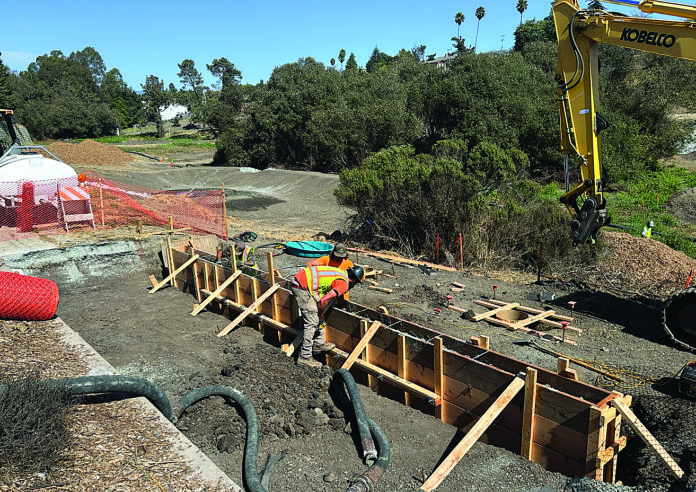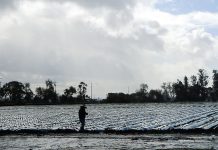
Work is moving forward on a project to restore native habitat and implement a series of water quality treatment projects to redesign the path of stormwater to Middle Struve Slough.
Workers are already several weeks into the job, which is located between Hope Park and Pennsylvania Drive.
The city of Watsonville and Watsonville Wetlands Watch (WWW) are collaborating on the project, which is funded by the California Ocean Protection Council.
“Construction of the sediment catchment basins and new ponds is near complete and the contractor is currently beginning work on a new overlook for the trail system,” said WWW Director Jonathan Pilch.
Much of the run-off from the roadways, neighborhoods,
commercial and industrial areas in Watsonville flows untreated to the Watsonville wetlands and out to
the Monterey Bay, Pilch said. As a result, the City’s sloughs, once drained for farming, and now surrounded by
development has impaired water quality, affecting birds, wildlife, and trail and beach users.
With over 70% of the City’s run-off flowing untreated to the wetlands, even small amounts of pollution have a
big impact. One arm of the project is addressing this by redesigning the way stormwater flows to the wetlands and ocean.
When completed, the Middle Struve Slough Habitat and Water Quality Improvement Project, funded by a
$1.1 million grant, will include treatment wetlands and sediment catchment basins that intercept stormwater before it flows to the wetlands, a series of ponds designed to improve habitat for birds, western pond turtles, and other wetland wildlife, and restored native plants throughout the area.
The work also includes a new wildlife viewing platform.
Designed under a grant from the Regional Water Management Foundation and California Department of Water Resources, WWW and Watsonville Public Works staff spent the last several years gathering community input into project designs, monitoring water quality, developing site plans and environmental permits, and removing invasive plants to help prepare for the construction project.
“The project will have great immediate benefits for our wetlands, wildlife and trail users, and will also serve as
an important pilot project that can be replicated throughout the city and coastal cities throughout California,” Pilch said.
The new ponds are expected to fill this winter and the stormwater treatment basins will be ready to
capture and clean water at the start of the rainy season. Water quality will be monitored throughout the
winter and over 6,000 native plants will be planted by local students and community volunteers over the
coming months.
In time, project designers hope the project will help to bring back wildlife to the region. It will also help the city to adapt to extreme weather events and climate driven challenges, by improving the ability of the city’s
wetlands to manage winter flooding.
“When managed well, wetlands are a critical tool in
providing clean water, supporting resident and migrating wildlife, and adapting to unpredictable weather
and climate changes,” Pilch said. “They’re an amazing resource in the city’s backyard. We’re excited for the community to benefit from and enjoy this project for many years to come.”












The work also includes a new homeless encampment viewing platform for your viewing pleasure. I just call it as I see it or rather as you will see it